Thick-billed Murres, like all other seabirds, spend the vast majority of their time at sea. But for about 2 to 2 1/2 months per year they are tied to the land to breed and raise young. Theirs is an interesting strategy.
Tight grouping offers more protection from predation. Neighbours combine to jab at gulls and jaegers with their sharp bills.

This is not a good nesting situation for this murre (protecting a chick underneath it). It has no neighbours to help ward off marauding gulls.
The “nest” is no more than a bare spot on a rocky ledge most often on high cliffs directly above the sea. They tend to nest in close proximity to each other and for good reason. One of the main predators of their eggs and chicks is the Glaucous Gull. These rapacious birds hover on the wind over the murres looking for any opportunity or opening they can take advantage of to grab an egg or nestling. The murres band together and raise a defensive shield of sharp bills with which they will jab the gull if it gets too close. Usually this works and the gull drifts off looking for other opportunities. But one particular gull was an aggressive killer. Rather than hover and wait, this bird would fly up to the line of murres, grab one by the wing or tail and pull it off the ledge. The hapless murre, not a nimble flyer at the best of times, would have to fly off a good distance, turn, and pick up enough speed to get it back into place. In the meantime, the gull, taking full advantage of the disruption its actions had generated amongst the neighbours and its fine flying capabilities, would dart in and grab whatever was available and then make off. Interestingly, this seemed to be particular to just one gull, not the others – it was highly effective.

Always alert – a Glaucous Gull looks for an opening. Note the murre just below it with its bill raised and ready to jab.
Thick-billed Murres don’t start to breed until they’re 4 years old. Pair bonds seem to be long-standing, especially if the birds are successful. The single teal-coloured egg is sharply conical reducing the roll radius so that it is less likely to roll off the ledge should it be inadvertently bumped – it would roll in a tight circle. After about 30 days the egg hatches.
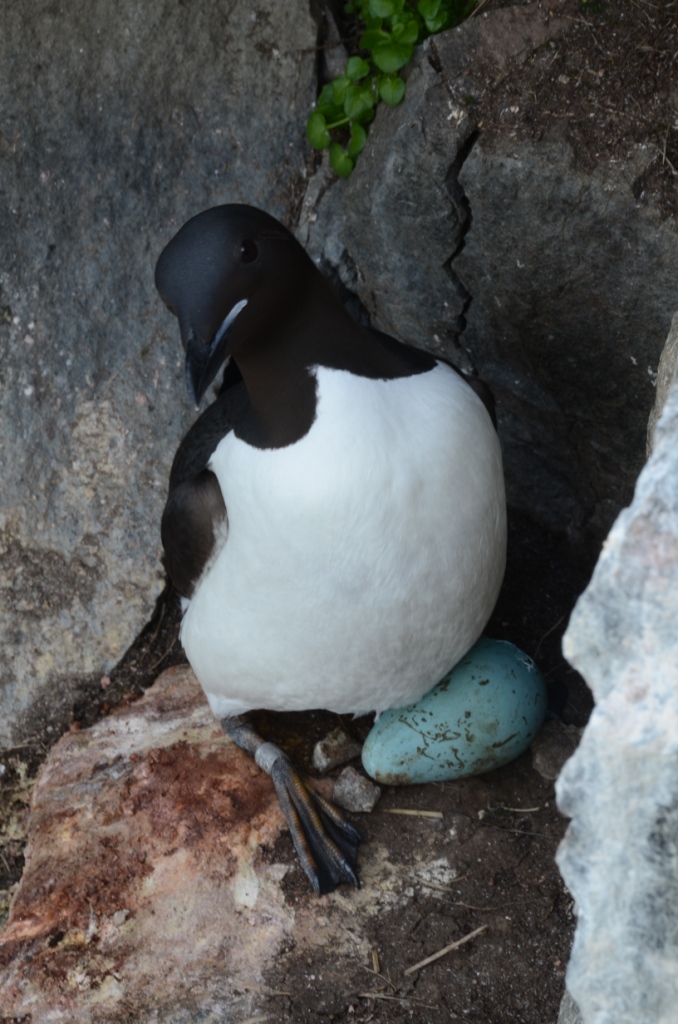
The eggs are sharply conical to reduce their roll radius – ledge space is sharply limited with little room for error.
Especially in the first few days, before the chick can thermoregulate independently, they are highly dependent on their parents for protection, both from the elements and from predation.
The parents take turns staying at the nest to protect the chick and going out to sea to get food. [One parent takes the day shift at the nest and one the night shift…..but I can’t remember which does what.]
The chicks have voracious appetites and wolf down everything that is brought to them – no matter how long it sometimes seemed.
Most chicks are hatched with a day or two of each other but not all and at any one time you might see chicks that were as much as a week apart in age.
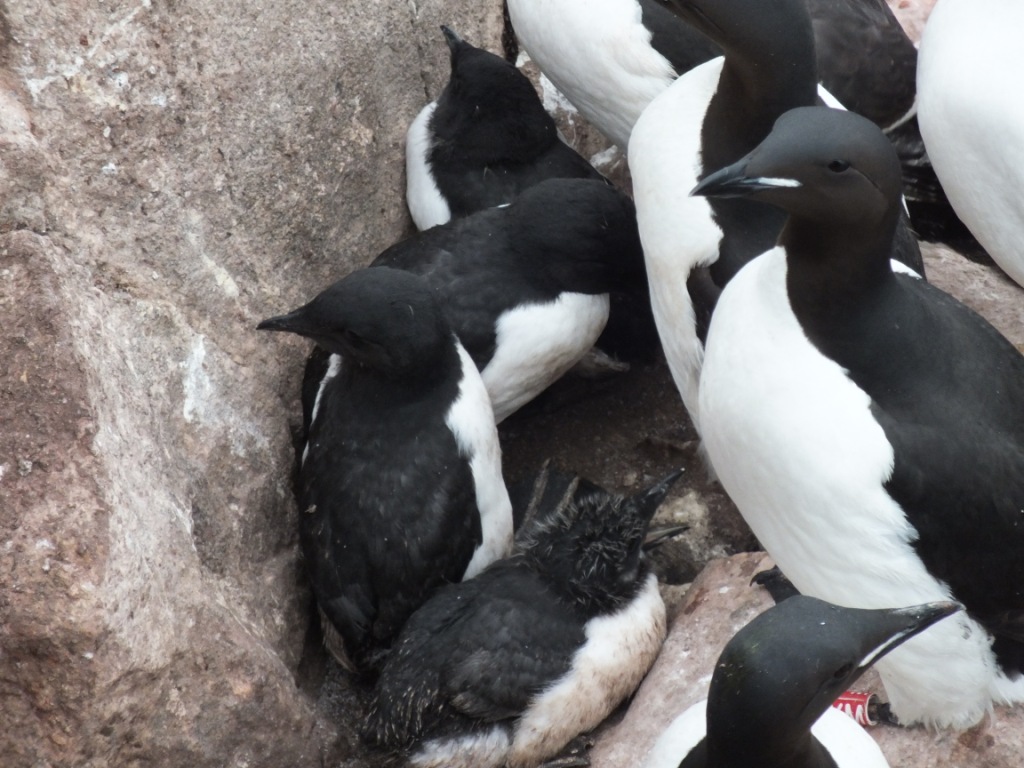
The 4 birds on the left are all young ones; 3 of them have a more developed plumage and it won’t be long before they’re ready to leave the nest.
Fledging is an interesting process in this species. The young birds don’t wait until they are fully grown to leave the nest – they leave when they are about one quarter to one third the size of the adult. It is incredibly interesting to watch! The young bird begins to walk back and forth on its little patch of ledge uttering a unique call that is a signal to the father (always the parent that accompanies it) that is ready to go. Suddenly it dives off the ledge, wings (that are not fully developed yet and thus not capable of flight) beating like mad. The descent takes the shape of a ‘J’ with the chick, right at the last moment, curving outward to hit the water. All this time the father is right on its tail and lands in the water beside it.
This is a critical moment in the life of the chick and in the pair bond. If the parent is “smart” it will usher the young bird as quickly as possible away from the cliffs and out to sea, trying to get as much distance between them as it can. Because there are two serious potential threats: the first is Glaucous Gull predation. Quite often a gull will follow them down to the water and try to snatch the young one. But if the parent stays close and moves it quickly out to see the gull won’t likely be successful. The other is other murres!! Now this is one of the strangest things I’ve ever seen and have not been able to figure it out from an evolutionary point of view but….often other adult murres will attack or mob the chick sometimes killing or drowning it. Again, if the parent stays close and fends them off aggressively, all the while moving the chick out to sea, then the chances of its surviving are greatly increased.

Junior has landed successfully and dad is quickly ushering it out to sea and away from the cliffs where the gulls are.
One memorable day we all sat in awe on the clifftops and watched as chick after chick after chick jumped off its perch and, flapping wildly, angled for the sea. Some of these chicks (and families) we’d known from the egg and (yes, I admit it!) we cheered with each successful landing. And exhorted the fathers to get them moving, get going!!! This experience underscored the reason they were so close in age – the sheer volume overwhelmed the predators and gave the young birds a better chance to survive.
But, sadly, they weren’t all happy stories. If a young bird hit a ledge on the way down it would likely survive that impact ok but would not make the water and would end up in the rocks below – easy pickings for waiting Arctic Foxes and gulls. Or they might still make the water but the momentary jog would separate it from its parent. the young bird could then be seen swimming back and forth parallel to the shore, peeping forlornly, but the parent would not recognize it as its own (and I have seen parents swim back within a few feet of their separated offspring and not recognize it). These “orphans” are doomed – just a matter of time before a gull would grab them and swallow them whole.
And, of course, watching other adult murres attacking a young one was hard to take. I just don’t get it….
But the happy stories greatly overshadow the sad ones and another generation of Thick-billed Murres was on its way – to return in 4 years to make it happen for themselves.

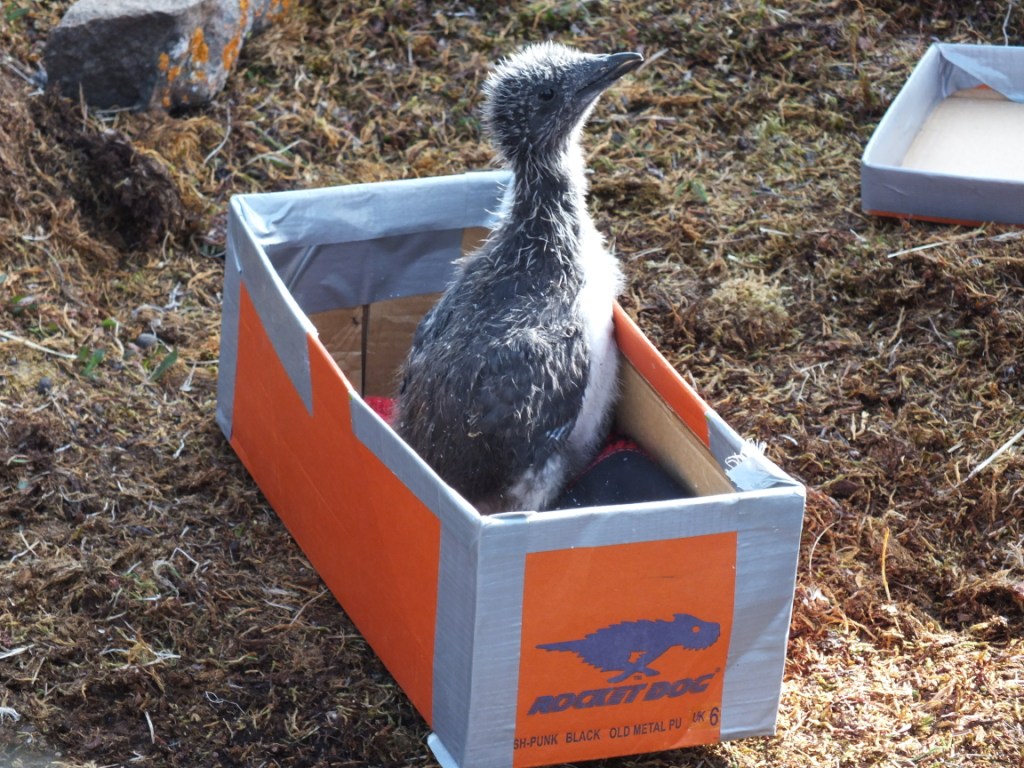
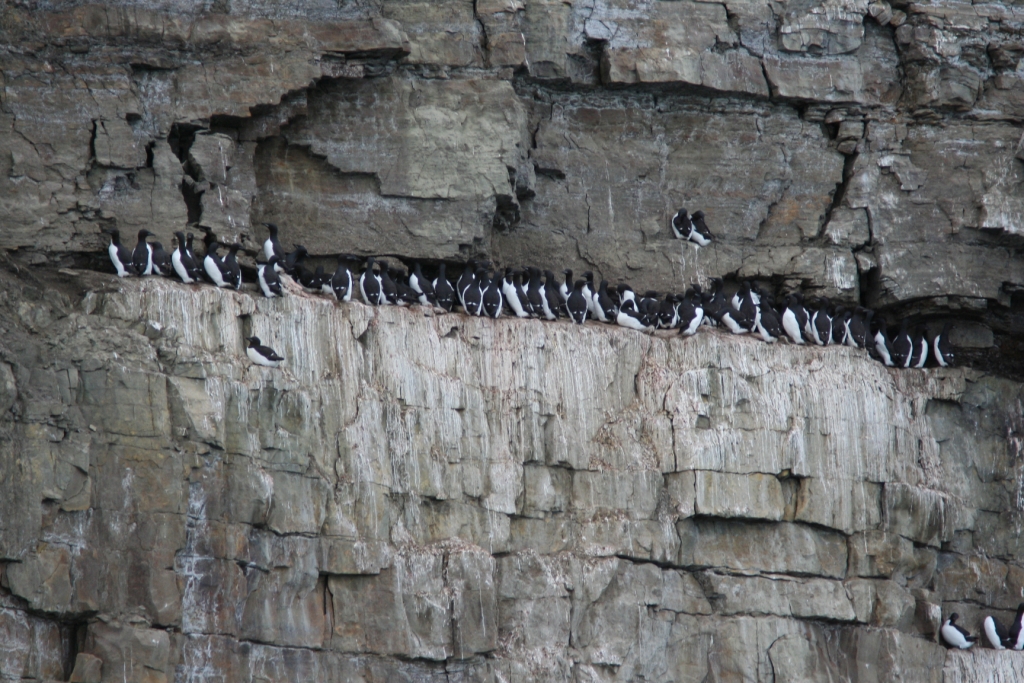
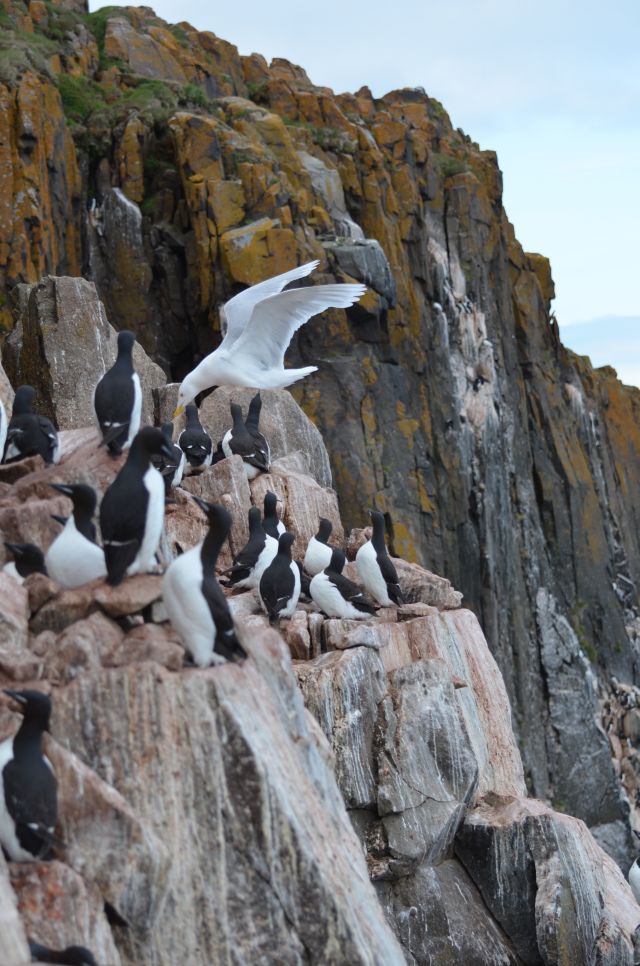
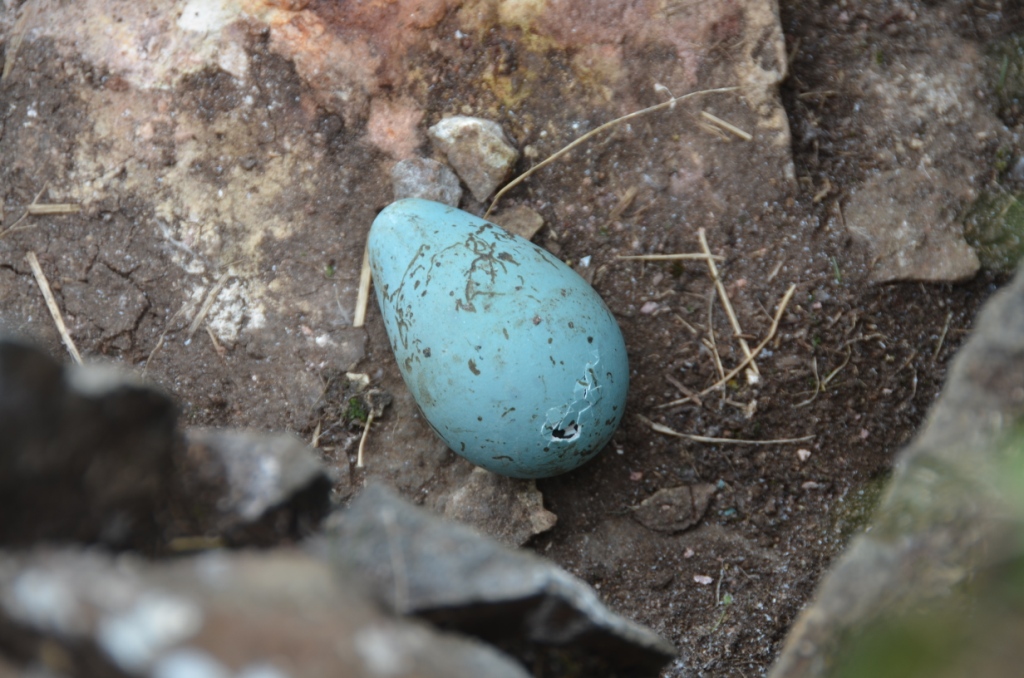
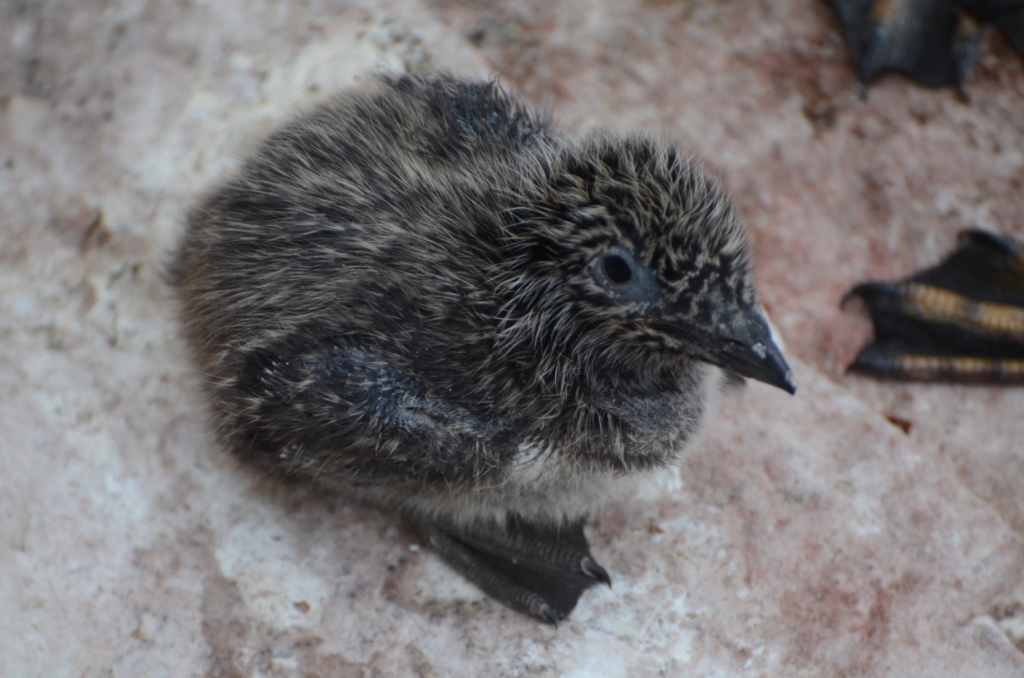
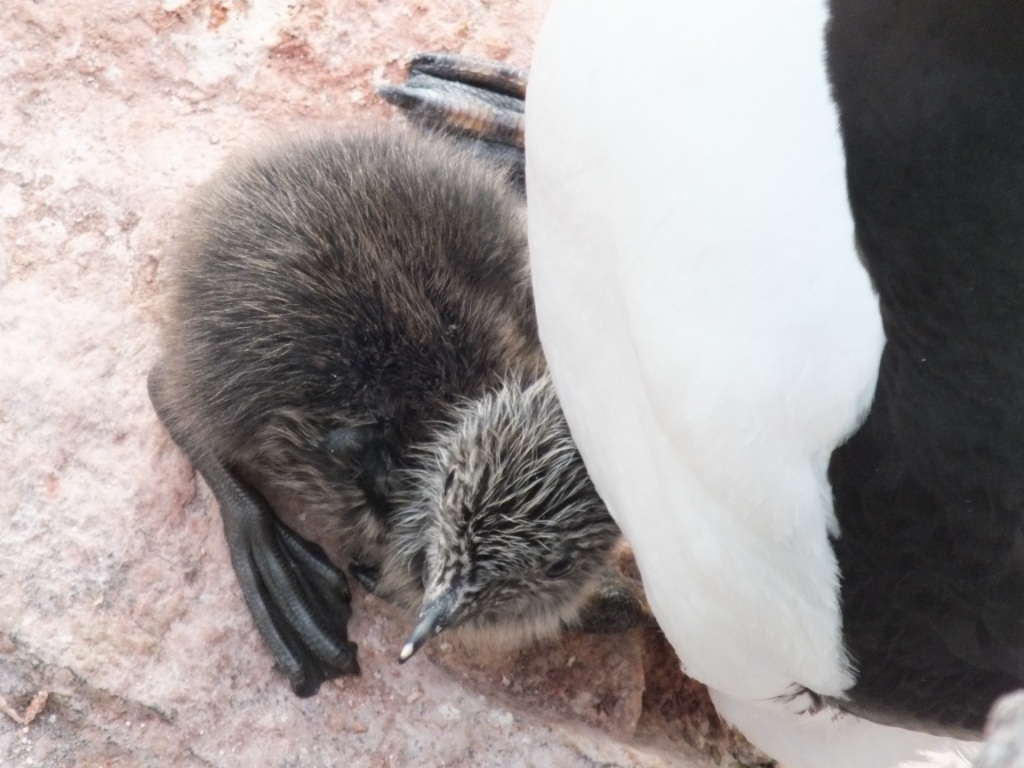
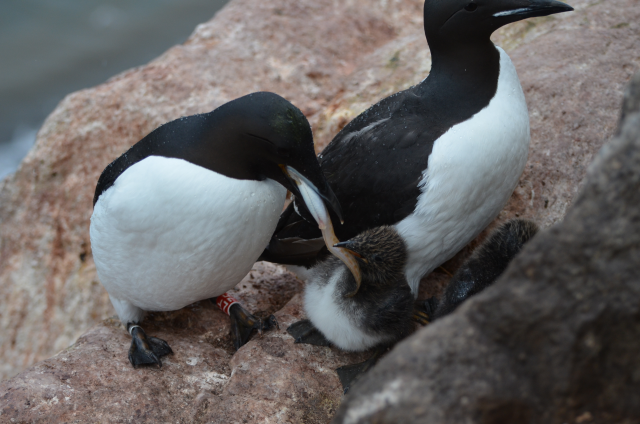
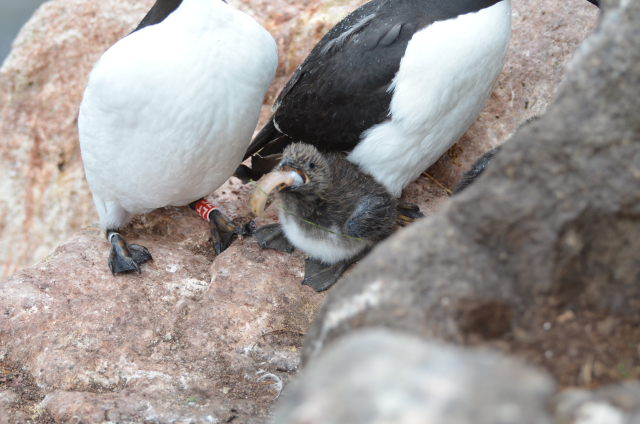
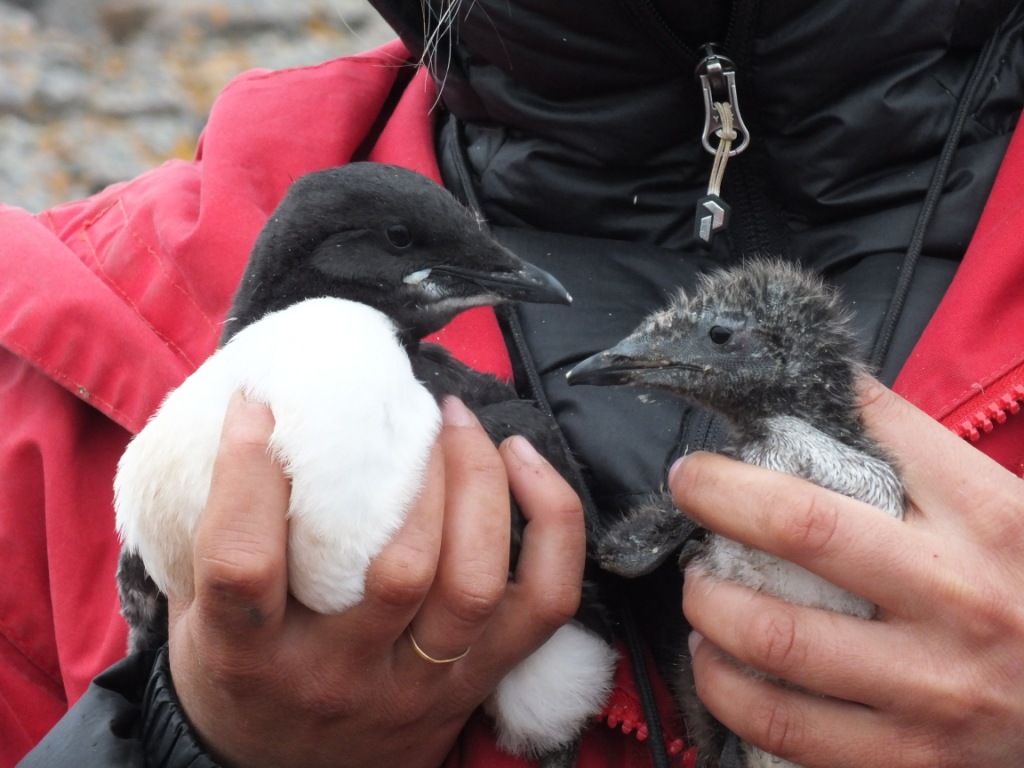
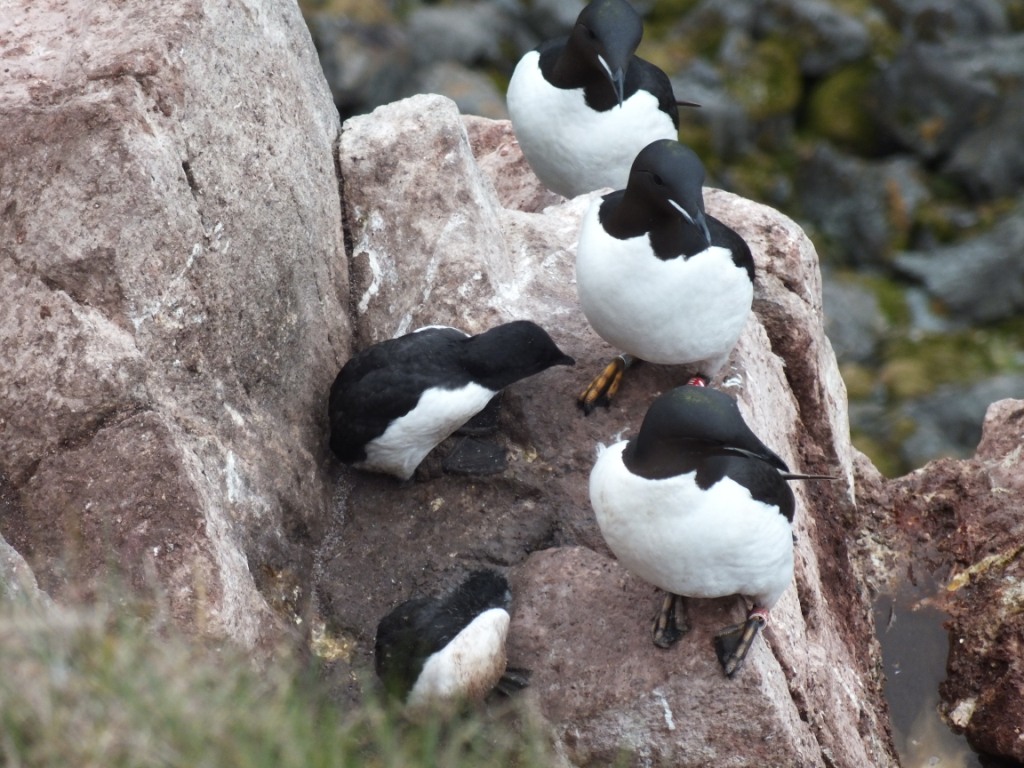
Hi great stories. How are you able to get a chick in hand to band?
I’m really enjoying your close observations on the Murres. Do you think they attack the young as a part of natural selection so that only the strongest survive or to control the population numbers because I note that they can live for 25 years? Anyhow, it is hard to fathom and I would find it difficult to witness too. Fantastic photos!
In response to your questions: Most of the chicks were obtained by my climbing down the cliff face and passing the young birds up to a colleague. We would rapidly band them, take morphometrics and a small blood sample and then return them to the exact nest. We were very careful to go as quickly as possible and make sure that we knew what nest each chick came from.
I’m not sure that weaning out “weaker” birds would be the dynamic involved in these attacks. To be very honest I have not been able to come up with a plausible explanation (nor have my colleagues). It’s mystifying…….and certainly disturbing to watch. Gull predation is bad enough…..